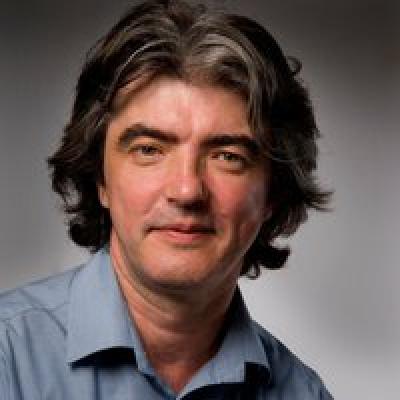THE NATURE OF LIFE
The Brain

Written by Dr. Nash Popovic
The sheer complexity of the human brain on the cellular level is hard to grasp. It is estimated that it contains approximately 86 billion neurons, and an average neuron has around 1,000 synapses (points of contact with other neurons, where an electric impulse turns into a chemical reaction). These give an unimaginably high number of possible combinations. Any detailed description of the brain structure and its functioning is far beyond the scope of these materials, so we will only outline those aspects that are relevant to the relation between the brain and the non-material side of the living organism. In a nutshell, neurons, via synaptic links, enable electro-chemical processes that provide the material basis for consciousness. They create waves that via awareness become information or experience, and in this way affect the soul. We propose that the interaction goes in the other direction too: the brain is susceptible to the influence of one’s intent. Putting them together, we can say that the brain is the organ of consciousness.
The Mechanisms That Enable Consciousness
There is no doubt that the brain is instrumental for consciousness, especially for the formation of specific patterns, such as images, that correspond to, or are associated with, the phenomena and events of physical life. The likely mechanism that enables this process is the interference (the combining) of coherent electromagnetic fields at the point of dendritic interactions[1]. This interference can produce holographic-like representations. It also allows memory to be recalled by a ‘reference’ signal (any associated element can be a trigger, a ‘reminder’ for the activation of the pattern), and enables the storing of potential information in a distributed rather than localised manner (for more detail, see section ‘Memory’ in the chapter The Intermediaries of the Mind).
On more basic levels, though, the very complex structure of the brain does not seem to be necessary for consciousness. A cytoskeleton consisting of microtubules could play a similar role to the nervous system in cells. Pribram, Penrose, Hameroff, Schempp and many others have applied quantum physics to analysing the relation between consciousness and neuronal functioning. They claim that quantum coherence (which means that when two quantum systems interact, their wave functions become ‘phase entangled’) can occur in microtubules and provide a mechanism for intracellular quantum holography. So called ‘beat frequencies’ of faster microtubule vibrations could be a possible source of the observed electro-encephalographic (EEG) correlates of consciousness. If this is correct, it provides a mechanism for all living organisms (even very simple ones) to have at least a rudimentary consciousness as they all have microtubules.
[1] Dendrites are branches from the body of a neuron that reach out to other neurons.
Brain Functions
The link with awareness and intent, that the brain enables, is manifested in many of its functions:
Perceiving: one of the main functions of the brain (and its biological equivalents in species without a brain) is to be the intermediary between the soul and the environment, translating signals into the wave patterns that awareness can pick up. In other words, the brain provides the materials by transforming sensations into potential information or experience. The ‘blind sight’ experiments already mentioned, for example, indicate that the major function of a particular brain region is to enable the link with awareness, rather than perception as such. This may also explain the paradox of the primary visual brain area (V1): it is claimed that ‘V1 does not ‘explicitly’ represent colour and form because it has no cells that are sensitive to colour, and so on. And yet conscious appreciation of colour and form is destroyed by damage to V1’ (Baars, at al., 1998, p.275).
Selecting within an accessible range of signals happens on several levels, but the bulk of it takes place in the brain. Bergson regarded the brain as a filter whose purpose is to reduce the amount of data which would otherwise invade our consciousness, and to eliminate what is superfluous. This view is experimentally vindicated:
Much of neural activity is known to be inhibitory… There is … evidence that selective attention operates, in part, by the inhibition of nonattended stimuli (cf. Arbuthnott, 1995). This is consistent with the view that the brain may act as a filter (as well as an organizer) of information. (Velmans, 1995, p.261)
The importance of this selection becomes clear considering that 75% of neurons in the human brain are inhibitory, compared with 45% in the monkey brain and even less in rabbits or cats. A release from inhibition though, could explain certain phenomena such as the sudden improvement in short-term memory performance, if after a series of trials with similar stimuli, the features of the stimuli to be remembered are changed (see Wickers, 1972). Alleged extra-sensory perception might also be a result of bypassing this filter.
Constructing: another important function of the brain is structuring and organising. Psychologist Rock (1975, p.4 ) writes:
…it would seem that the world we perceive is the end result of events that occur in the nervous system and in this sense is a construction. It bears a certain kind of similarity to the realm of the material world, but is also very different from it.
Neurons and synapses create a network that is strengthened by repetition. The corpus callosum (the structure that bonds the two hemispheres), for example, is essential for maintaining the link between the image of an object and the corresponding word. The brain is not aware, but it can perform complicated operations and preserve connections without awareness. However, it is important to remember that different brain modules process different types of signals (shape, colour, movement, etc.) They do not form meaningful representations (which is why it is possible to use the same group of neuro-connections to form images of different objects). So awareness is still necessary to establish and reinforce these connections. Although awareness is required for the process of connecting and separating, the extent to which elements can be connected or separated depends on the complexity of the brain organisation.
Storing: the brain also has a vital function in storing information in a specific form. Neuronal connections enable particular structures (e.g. images and words) to be permanently preserved. Without the fully functional brain, experiences and information are not necessarily lost, but the form they acquire in physical existence may be. A form (such as language structures) is reinforced by sensations from the material world, dialogue and internal monologue – all of which rely heavily on the brain functioning. Furthermore, the brain configuration is more solid than its non-material equivalent. It may still be possible to preserve and create mental constructs without the brain, but in such cases they are much more fluid, so the brain is normally necessary to consolidate, stabilise and maintain them.
Movement and coordination: the brain also plays an intermediary role for both voluntary and automatic movements, in terms of coordination of their sequences. For example, the brain stem controls breathing (the sequence of inhaling and exhaling), which is why we continue breathing even when unconscious. The brain (in particular, the limbic system and prefrontal cortex) is also involved in generating emotional reactions. Regarding intentional activities, the brain can amplify a weak intent signal and initiate the mobilisation of physical energy for an associated action.
The above illustrates that the brain has many important functions (some of which will be discussed in more detail in the next part The Mind). It is not surprising that its contribution to development is crucial.
The Contribution of the Brain to Development
A greater number and variety of neural connections and their functions enable the development of the mind which, in turn, can enhance the complexity of energy configurations in the soul. In other words, the growth of consciousness – which depends, to a large extent, on the growth of the brain – enables expansion of awareness and a greater influence of intent. There is also another way in which the increase of brain complexity contributes to souls’ development. At early stages, this increase facilitates gradual individuation – the formation and separation of individual souls from the rest of non-material energy. This is necessary in order for energy to be managed and eventually intentionally shaped, which is an essential part of development. However, at a certain historical point, in a sort of dialectic fashion, this trend takes a turn towards merging. There are many indicators that we, on this planet, have reached that point now (more about that later).
Some Possible Questions
Does every intentional mental activity affect the brain?
Every intention creates readiness potential and therefore affects brain activity. However, given the chaotic dynamic of brain functioning, this effect can be so small that it may not be always detectable. On the other hand, a sustained intentional mental activity can over time even lead to neuroplasticity (e.g. a transfer of a given function from one location in the brain to another). This has some interesting consequences: for example, the negative effects of a localised brain injury, and even Alzheimer’s disease, could sometimes be mitigated by investing effort into re-learning the affected skills and functions. Such intentional activities force the brain to use areas unaffected by the injury or decease for these functions.
Is there any symmetry between the material and non-material aspects?
If the soul is considered parallel to the body, its ‘surface’ can be paralleled to the brain. So – in a manner of speaking – there is an inverse symmetry: the body is the cover of the brain and the nervous system, while this surface is the cover of the soul.
Why does this exceptional increase in complexity not happen in the kidney, for example, but in the brain?
One of the conditions for evolution is an exposure to a variety of external stimuli and an adaptation to environmental changes. All the senses are connected to the brain. So, while kidney cells are exposed to a relatively narrow range of stimuli, brain cells are frequently brought into contact with new ones, which is conducive to learning and ongoing development. In other words, the kidney can afford its relative simplicity, while the brain cannot.
Why does awareness not pick up waves from other parts of the body?
We are aware of a very narrow range of waves that come even from the brain not to mention other parts of the body. Most of waves that the body and the brain produce can be considered noise, as they are related to autonomic functioning that living organisms normally do not need to be aware of. Distinguishing the signal from the background noise is likely to have been refined throughout the evolutionary process.

